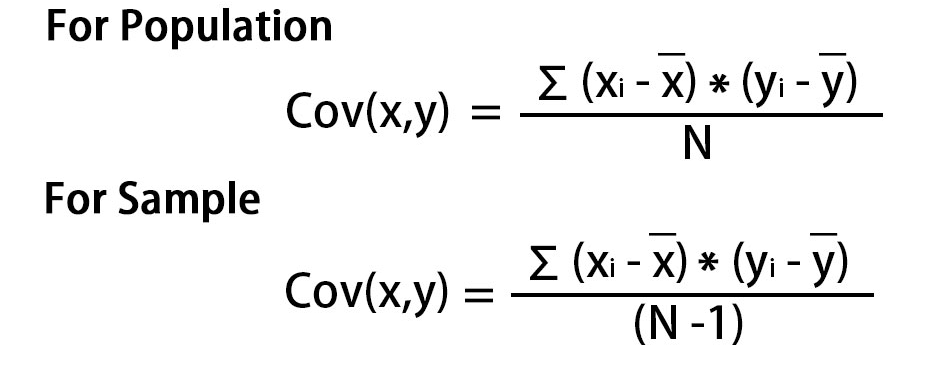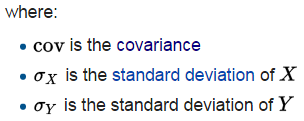Welcome to the Correlation vs Covariance post. I hope you have gone through all the previous posts on Machine Learning, Supervised Learning and Unsupervised Learning.
In Statistics and Machine Learning, frequently we come across these two terms known as Covariance and Correlation. The two terms are often used interchangeably. These two ideas are similar, but not the same. Both are used to determine the linear relationship and measure the dependency between two variables. But are they the same? Not really.
Despite the similarities between these mathematical terms, they are different from each other. Lets find out how.
Covariance:
Covariance indicates the direction of the linear relationship between the two variables. By direction we mean whether the variables are directly proportional or inversely proportional to each other.
It means increasing the value of one variable might have a positive or a negative impact on the value of the other variable.
Also, it’s important to mention that covariance only measures how two variables change together, not the dependency of one variable on another one. It can vary between -∞ to +∞.
Also, it’s important to mention that covariance only measures how two variables change together, not the dependency of one variable on another one.
These variances can vary with the scaling of the variables. Even a change in the units of measurement can change the covariance.
The value of covariance between 2 variables is achieved by using the formula as follows:

Thus, covariance is only useful to find the direction of the relationship between two variables and not the magnitude.
Correlation:
Correlation indicates the direction and also the strength of a relationship between two, variables. It not only shows the kind of relation (in terms of direction) but also how strong the relationship is.
Thus, we can say the correlation values have standardized notions, whereas the covariance values are not standardized and cannot be used to compare how strong or weak the relationship. It can vary between -1 to +1.


If there is no relationship at all between two variables, then the correlation coefficient will certainly be 0. However, if it is 0 then we can only say that there is no linear relationship. There could exist other functional relationships between the variables.
A machine learning algorithm often involves some type of correlation among the data. Correlation refers to the linear relationship between two variables. It expresses the strength of the relationship between 2 variables.
Types of correlation
There are three types of correlation. They are
- Positive Correlation
- Negative Correlation
- No Correlation
Positive Correlation – When the value of one variable increases, then the value of other variable also increases. Ex – Suppose there is a 0.7 correlation between income and spending. If income increases by $100, then the value of spending will also increase by $70 ($100 X 0.7).
Negative Correlation – When the value of one variable increases, then the value of other variable decreases. It denoted an inverse relationship.
No Correlation – If the correlation is zero, then there is no relationship between the 2 variables.

Which one to choose?
When it comes to choosing between Covariance vs Correlation, the Correlation stands to be the first choice as it remains unaffected by the change in dimensions, location and scale.
Since it is limited to a range of -1 to +1, it is useful to draw comparisons between variables across domains. However, there is an important limitation is that both these concepts of covariance and Correlation measure the only linear relationship.
Thanks for reading. Do read the further posts. Please feel free to connect with me if you have any doubts. Do follow, support, like and subscribe this blog.
Fact of the day:
Almost 30% of companies around the globe have implemented (or will implement) machine learning tools in one or more of their sales processes. companies are rapidly shifting to an automated sales process in almost any industry on the planet.
The new era is beginning!